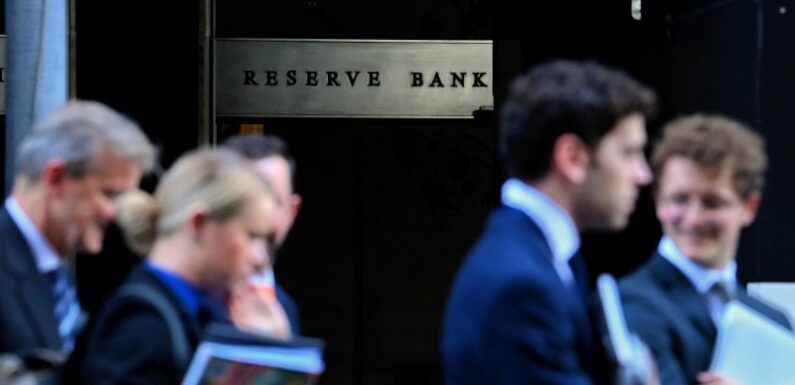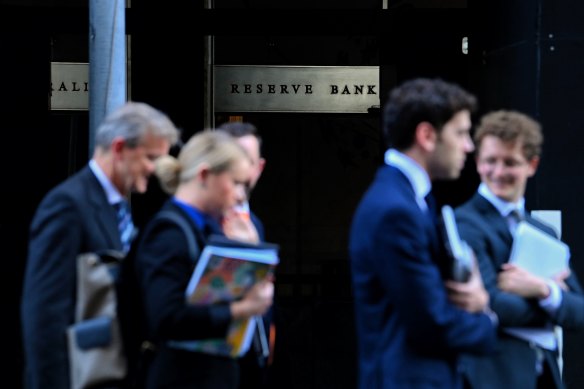
Save articles for later
Add articles to your saved list and come back to them any time.
Households can breathe a sigh of relief after the Reserve Bank board decided to hold interest rates steady at 4.1 per cent on Tuesday.
It is the first time since March-April last year that the RBA has left the cash rate unchanged at two consecutive meetings.
It is the first time since March-April last year that the RBA has left the cash rate unchanged at two consecutive meetings.Credit: Kate Geraghty
The bank has lifted interest rates 12 times since May last year, driving up monthly repayments on an average $600,000 mortgage by more than $1350.
But recent figures show the economy is slowing considerably.
Retail turnover declined as households pulled back on spending while inflation eased to 6 per cent in the year to June – down from the December peak of 7.8 per cent but still above the RBA’s target band of 2 to 3 per cent.
Reserve Bank governor Philip Lowe warned some further interest rate rises might be needed to get inflation under control.
“Some further tightening of monetary policy may be required to ensure that inflation returns to target in a reasonable timeframe, but that will depend upon the data and the evolving assessment of risks,” he said.
“In making its decisions, the board will continue to pay close attention to developments in the global economy, trends in household spending, and the outlook for inflation and the labour market.”
Lowe said the board wanted more time to assess the impact of the 4 percentage points worth of interest rate rises since last May.
He said recent data including the latest inflation figures pointed to inflation returning to the bank’s target range by late 2025, but there were still economic uncertainties ahead.
“Services price inflation has been surprisingly persistent overseas and the same could occur in Australia,” Lowe said.
“There are also uncertainties regarding the lags in the operation of monetary policy and how firms’ pricing decisions and wages will respond to the slowing in the economy at a time when the labour market remains tight.”
Household spending was another uncertainty, Lowe said.
“Many households are experiencing a painful squeeze on their finances, while some are benefiting from rising housing prices, substantial savings buffers and higher interest income,” he said.
“In aggregate, consumption growth has slowed substantially due to the combination of cost-of-living pressures and higher interest rates.”
Treasurer Jim Chalmers said the RBA’s decision to keep rates steady would be a “big relief” for Australians with mortgages.
“This is a welcome reprieve for Australians already doing it tough enough. Australians are still under the pump, even as inflation moderates and even after this decision today,” Chalmers said during question time.
“We know inflation in our economy is coming off but [it is] still too high. We understand and we acknowledge that. We do take some encouragement from the most recent quarterly inflation data, which showed inflation … was half what it was in the March quarter of 2022 under those opposite [the Coalition]. We see some welcome progress but there [is] still some distance to travel.”
He said the government’s priority was to roll out cost-of-living relief to people in the most need by helping with their out-of-pocket health costs and electricity bills.
Opposition foreign affairs spokesman Simon Birmingham said he feared the economy was in a fragile position, and a rate pause would be cold comfort for many Australian families, “who are already paying the highest interest rates in 11 years”.
“That ultimately is the thing that Australians are seeing. Labor’s back in power and interest rates are high again,” he said on Sky News on Tuesday morning.
“They’re feeling that pain of high interest rates along with high inflation and sadly that is making many households have to pull back on areas of spending.”
Cut through the noise of federal politics with news, views and expert analysis. Subscribers can sign up to our weekly Inside Politics newsletter here.
Most Viewed in Politics
From our partners
Source: Read Full Article
